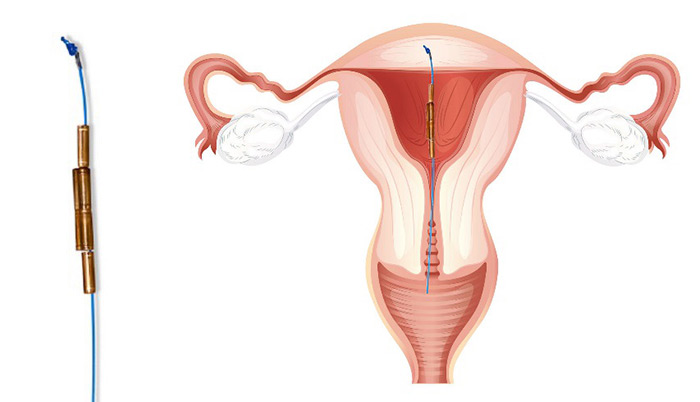

Tartaczna 2
Discover the quality of healthcare in the style of Tartaczna2!


GyneFix is an intrauterine copper-releasing contraceptive system used successfully in Europe. It comes in two sizes and consists of 4 or 6 cylindrical copper beads threaded over a nylon thread, which is fixed to the uterine muscle with special applicator.
The thread with the copper beads hangs freely in the uterine cavity and the end of the thread is inside the vagina.
Lack of arms, which are a part traditional IUDs, significantly reduces the risk of side effects. Copper ions released from the system have a spermicidal effect, hindering sperm movement and egg fertilisation. GyneFix offers over 99% effectiveness at preventing pregnancies.
GyneFix can be inserted for 5 years (mini or standard version).
offers effective contraceptive protection for 5 years
contains no hormones and therefore does not affect the menstrual cycle
can be used by all women, including young women who have not given birth
is well tolerated
does not increase the risk of heavy menstrual bleeding
its removal causes a quick return to fertility.
GyneFix is intended for women interested in long-term contraception, especially those with contraindications to hormonal preparations. Unlike other copper-releasing IUDs, GyneFix can be used by young women over 18 years of age and by those with heavy menstrual bleeding and myomas. It is also recommended to women who smoke, have a tendency to thrombosis, diabetes and high blood pressure. It does not cause depression, decreased libido, migraine headaches or weight gain.
GyneFix can also be inserted during caesarean section after extraction of the baby, to provide adequate protection against another pregnancy.
GyneFix does not protect against sexually transmitted diseases (e.g. HIV). Women who are not in a stable relationship should additionally use condoms.
GyneFix should preferably be inserted in the last days of menstruation, when the cervix is open. After giving birth, an IUD can be inserted after 3 months at the earliest. After insertion, the patient should not use tampons or have intercourse for one week. After the following menstrual period, the patient should come to the gynaecologist who has inserted an IUD for a follow-up. GyneFix can be removed at any time and fertility returns in the next menstrual cycle.
When GyneFix is inserted into the uterine cavity, you may feel some pain, which depends on your pain threshold. Most patients tolerate the procedure well. An IUD is inserted under local anaesthesia of the cervix with lignocaine. One hour before IUD insertion you should take one tablet of an analgesic (e.g. paracetamol or ibuprofen).
Contraindications to insertion of GyneFix include, but are not limited to, allergy to copper, vaginal inflammation, pelvic inflammatory disease, unexplained uterine bleeding, abnormal cervical cytology result, uterine malformation, abnormalities of the uterine cavity.
Before your body gets used to GyneFix, you may experience spotting or vaginal bleeding and slight lower abdominal discomfort for the first few days after insertion; these symptoms will gradually subside. Your first period with GyneFix may be heavier than usual. This usually disappears in subsequent menstrual cycles. There is a small risk that an IUD may fall out. If an IUD falls out, contact your gynaecologist as soon as possible.
After insertion of GyneFix, you should refrain from intercourse for seven days. After this time, your partner should not feel any discomfort but if he does, a nylon thread in the vagina can be shortened.
Prior to insertion of GyneFix, you must attend the consultation with a gynaecological examination and the ultrasound examination of the genital organs must be performed by the gynaecologist who will insert the IUD to exclude any contraindications. You must have a normal cervical cytology result (cytology group I or II), valid for a maximum of 6 months.